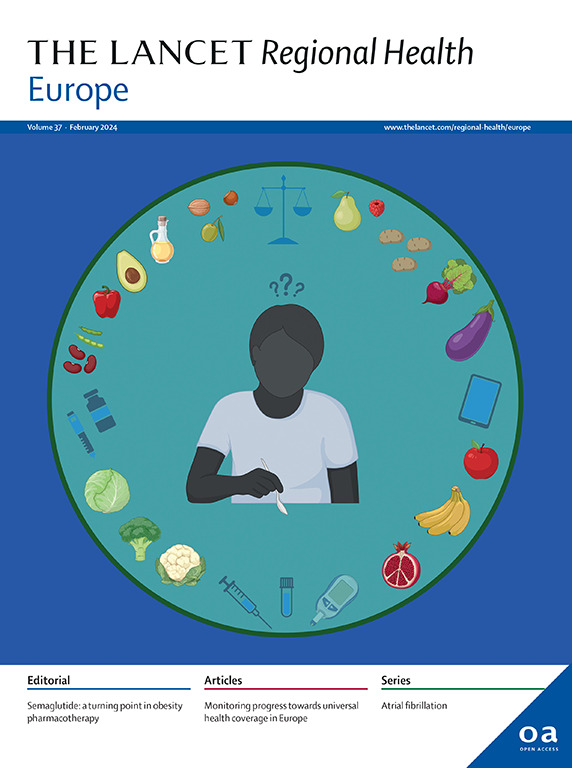Incidence of second primary cancers in lung cancer survivors by oncological treatment: a nationwide prospective cohort study in Spain
IF 13
Q1 HEALTH CARE SCIENCES & SERVICES
引用次数: 0
Abstract
Background
Among patients with lung cancer, treatment with novel oncological agents may influence the risk of developing Second Primary Cancers (SPCs). We aimed to evaluate the incidence of SPCs in patients with lung cancer according to the type of oncological treatment received.
Methods
We conducted an observational, prospective, nationwide study based on the Spanish Thoracic Tumour Registry (TTR), between August 2016 and March 2023. Eligible patients aged over 18 years, diagnosed with lung cancer, and who achieved tumour remission were included.
Findings
A total of 20,574 patients were included. After a median follow-up of 41.2 months (95% CI 40.2–42.2), 480 patients developed a SPC (2.3%). The overall incidence was higher among those treated with chemotherapy (2.9%) compared with those receiving immunotherapy (2.1%) or targeted therapy (1.5%) (p < 0.001). The cumulative incidence of SPCs at 12 months for patients that received chemotherapy was 1.22% (95% CI 0.99–1.45), 0.85% (95% CI 0.62–1.08) for immunotherapy and 0.67% (95% CI 0.34–0.99) for targeted therapy (p < 0.001). In the adjusted multivariate model, both immunotherapy and targeted therapy were associated with a reduced risk of SPCs: HR = 0.470 (95% CI 0.338–0.654) and HR = 0.701 (95% CI 0.574–0.855), respectively. Additional associated factors with SPCs included metastatic disease, HR = 0.456 (95% CI 0.377–0.552); history of tobacco use, HR = 1.599 (95% CI 1.127–2.269); and current smoking, HR = 1.319 (95% CI 0.923–1.884) p < 0.001.
Interpretation
Patients treated with immunotherapy and targeted therapy exhibited a significantly lower incidence of SPCs. Tobacco use was a key associated factor. Strengthening oncological follow-up and promoting interventions to address modifiable risk factors are essential for optimising long-term outcomes in lung cancer survivors.
Funding
This study was supported by the Spanish Lung Cancer Group (Fundación GECP).
肿瘤治疗后肺癌幸存者第二原发癌的发病率:西班牙一项全国性前瞻性队列研究
背景:在肺癌患者中,使用新型肿瘤药物治疗可能会影响发生第二原发癌症(SPCs)的风险。我们的目的是根据所接受的肿瘤治疗类型来评估肺癌患者SPCs的发生率。方法:我们在2016年8月至2023年3月期间进行了一项基于西班牙胸部肿瘤登记处(TTR)的观察性、前瞻性、全国性研究。年龄在18岁以上、诊断为肺癌且肿瘤缓解的符合条件的患者被纳入研究。研究结果:共纳入20574例患者。中位随访41.2个月后(95% CI 40.2-42.2), 480例患者发生SPC(2.3%)。化疗组的总发病率(2.9%)高于免疫治疗组(2.1%)或靶向治疗组(1.5%)(p < 0.001)。化疗患者12个月SPCs累积发生率为1.22% (95% CI 0.99-1.45),免疫治疗组为0.85% (95% CI 0.62-1.08),靶向治疗组为0.67% (95% CI 0.34-0.99) (p < 0.001)。在调整后的多变量模型中,免疫治疗和靶向治疗均与SPCs风险降低相关:HR分别= 0.470 (95% CI 0.338-0.654)和HR = 0.701 (95% CI 0.574-0.855)。与SPCs相关的其他因素包括转移性疾病,HR = 0.456 (95% CI 0.377-0.552);吸烟史,HR = 1.599 (95% CI 1.127-2.269);和目前吸烟,HR = 1.319 (95% CI 0.923-1.884) p < 0.001。解释:接受免疫治疗和靶向治疗的患者明显降低了SPCs的发病率。吸烟是一个关键的相关因素。加强肿瘤随访和促进干预措施以应对可改变的风险因素,对于优化肺癌幸存者的长期预后至关重要。这项研究得到了西班牙肺癌组织(Fundación GECP)的支持。
本文章由计算机程序翻译,如有差异,请以英文原文为准。
求助全文
约1分钟内获得全文
求助全文
来源期刊

Lancet Regional Health-Europe
Multiple-
CiteScore
19.90
自引率
1.40%
发文量
260
审稿时长
9 weeks
期刊介绍:
The Lancet Regional Health – Europe, a gold open access journal, is part of The Lancet's global effort to promote healthcare quality and accessibility worldwide. It focuses on advancing clinical practice and health policy in the European region to enhance health outcomes. The journal publishes high-quality original research advocating changes in clinical practice and health policy. It also includes reviews, commentaries, and opinion pieces on regional health topics, such as infection and disease prevention, healthy aging, and reducing health disparities.
 求助内容:
求助内容: 应助结果提醒方式:
应助结果提醒方式:


